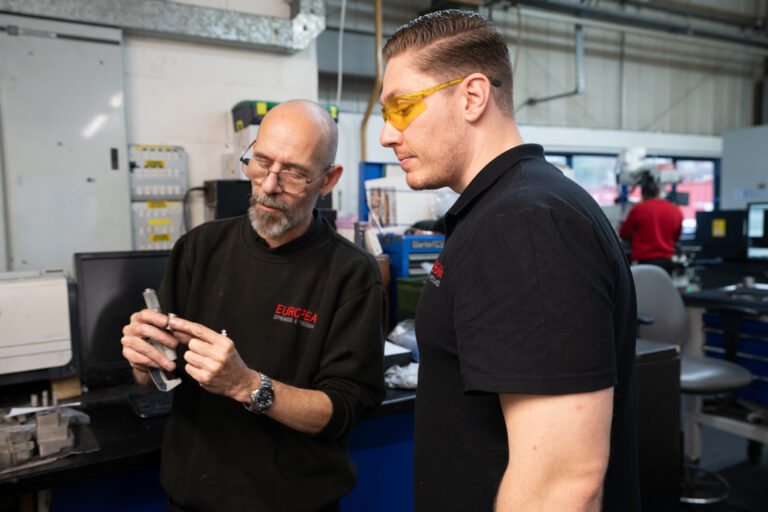Gas springs are items’ numbers over 770 different products, and when you factor in that these springs can be complemented with more than 70 diverse end fittings or even more accessories, you have a veritable multitude of different forms.
With over 70 years of experience in designing gas springs in Ireland, our range is not only exceptionally varied but also at the forefront of technological advancement. Our experienced design team is adept at determining a suitable gas spring to solve a problem, even if you haven’t decided upon the exact specifications yet.
With a proven history of problem-solving, we are equipped to cater to the needs of any conceivable project. Whether you require a conventional spring with slightly adjusted capabilities, a lockable gas spring, or an entirely unique product, we’re ready to step up and deliver.
Do not hesitate to contact us with your enquiries; our knowledgeable team will be happy to answer your questions.
Low Maintenance
Gas Springs require very little maintenance. Usually, a device with multiple parts would be more susceptible to wear and require regular maintenance checks. Still, gas springs avoid this issue by sealing their collection of components within an enclosed cylinder. They have an increased lifecycle over many other spring designs. For example, springs like tension springs rely on a mechanical method of operation
Long Lifespan
Traditional springs, such as compression springs, consist of coiled metal, which will wear down over time and slowly reduce the amount of energy stored. Gas springs work with a gas-filled cylinder that supports their operation and prevents premature wear, making gas springs a device that can be relied upon to function effectively for its entire lifetime.
Multi-Functional
Some springs can be designed with an interior plunger that possesses a diaphragm sufficient to extend to the end of its housing tube. In this case, the gas spring will be immobile once consistent force is applied, which will result in the spring performing more like a traditional spring. The gas volume and internal pressure are reduced inside the tube by either a sliding mechanism or an end stop. This enables operators to adjust the properties of the spring to suit the application’s specific needs.
Locking and Non-Locking
An experienced spring manufacturer will offer locking and non-locking as a feature of their gas springs.
Gas springs generally consist of a cylindrical body filled with nitrogen gas, a piston rod and a seal, along with a guiding function for compression and extension. A pushing force created by the gas inside will extend the rod; the exact amount of pressure will be determined by the dimensions of the spring and the specific internal pressure
The vital components used in Gas Springs rely on compressed gas to achieve their desired force, which can be compressed by a piston when a dynamic effect is needed. The key to this variability is the Schrader-type valve employed. This valve is a brass tube that is threaded along its exterior. A metal pin is found along the axis of the tube, and the valve body and a lip seal around the rod work with the valve. Compressed gas is injected through the tube using either a mechanical gasket (O-ring system) or high external pressures.
Gas springs and struts seem very similar, but a few key differences are present due to the internal designs. Gas springs are designed for motion control applications, such as doors, windows and other equipment. In comparison to gas struts, gas springs create higher force with shorter strokes. Gas struts are mainly used in vehicle suspensions and contain a coil spring that supports the vehicle’s weight; these work in conjunction as a shock absorber that limits the effects of vibrations.
High-quality gas springs provide several benefits that have led to their increased popularity in many applications. These can provide:
Here is an inclusive list of the main sectors and applications where Gas Springs improve designs and make a positive difference.

And even if we don’t have exactly the tool we need, European Springs’ in house technology enables us rapidly to design and make complex tools, allowing us to offer more competitive prices.



© Copyright 2025 | European Springs
Designed, Promoted and Powered by SQ Digital